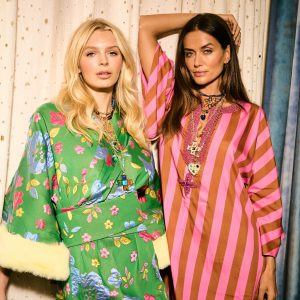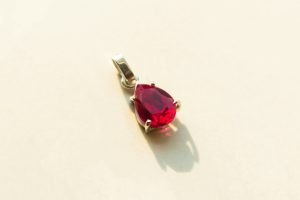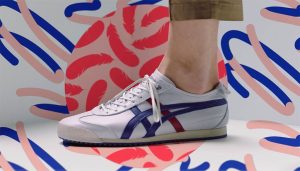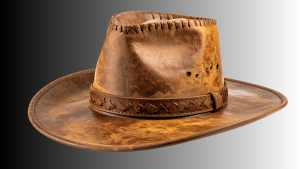The global market volume of lab-grown diamonds is expected to reach nearly 19.2 million carats by 2030. Combining elegance and environmental responsibility, sustainable fine jewellery brand, Idyl, introduces its lab-grown diamond collection, created in collaboration with fashion influencer Tamara Kalinic.

Idyl Debuts Lab-Grown Diamond Collection with Tamara Kalinic
With this new collection, Idyl hopes to redefine luxury by making diamonds accessible and reducing their environmental footprint.
Per Yahoo Finance: ‘The lab grown diamonds market is expected to see strong growth in the next few years. It will grow to $35.97 billion in 2028 at a compound annual growth rate of 8.8%.’ Witnessing the exponential growth of lab-grown diamonds, sustainable jewellery brand Idyl launched a limited-edition lab-grown diamond collection in collaboration with Tamara Kalinic.
Launched in 2020 by Kevin Lewy, Ori Siso, and Ornella Siso, Idyl’s concept of modularity allows the fierce, modern woman to express her unique self. The brand stands for traceable ingredients, ethically crafted jewellery, and sustainable lab-grown diamonds—so that ethical luxury is within reach. The lab-grown diamond collection is a way to make high quality diamonds more accessible to their customers without compromising their sustainability efforts.
Idyl X Tamara Kalinic
The Idyl X Tamara Kalinic collection features lab-grown pear diamond earrings personally designed by the fashion influencer. Paving the way forward in democratising diamonds and lessening the impact of diamonds on the planet, each piece reflects the jewellery brand’s dedication to high-quality, lab-grown diamonds that embody a more responsible future in fine jewellery.
The collection celebrates the sparkling lab-grown diamond as a vehicle for self-expression, confidence and creativity — these modular pieces, in white, yellow and rose gold, were designed to mix, match, and stack. “Every place I visit leaves a lasting impression, shaping not just my mood but what I choose to wear. The three cities I’ve chosen for these pieces hold a special place in my heart, each inspiring me in a unique way”, says Tamara Kalinic on Idyl’s official website.
The Venezia earring features a 0.10ct prong-set pear diamond. It’s the perfect stacking piece for any ear. Venezia offers versatile wear and can be paired with an add-on. Capri is a stunning 0.15ct prong-set pear dangles with a brilliant sparkle. Perfectly versatile, it elevates any look effortlessly. Paris is a degradé dangling beauty boasting three prong-set pear diamonds of 0.10ct, 0.15ct, and 0.25ct. This piece will upgrade your evening look in an instant. The collection is available at www.idyl.com with prices starting at $345.
Sustainability at fine jewellery brand, Idyl
Idyl is re-inventing diamond jewellery. The brand is on a mission to offer a sustainable and attainable alternative through lab-grown diamonds, traceable solid gold and ethical craftsmanship. The team uses the International Diamond Grading System to ensure each diamond has a sparkle of the best quality and clarity. The jewellery is crafted with certified ‘green gold,’ a traceable gold sourced from conflict-free regions, ensuring a mining process that harms no one, to maintain the highest standards of quality and ethics. Crafted exclusively in their Antwerp ateliers, each of the pieces is meticulously made, promising years of durability.
Global market for lab grown diamonds witnesses growth
The market for lab grown diamonds has grown exponentially, fueled by technological advancements, shifting consumer values, and growing environmental awareness. Consumers are increasingly drawn to these ethically produced stones as they offer the same brilliance and beauty as mined diamonds—without the heavy environmental or ethical cost. As the demand for sustainable luxury grows, lab-grown diamonds are emerging as the preferred choice for the modern, conscious shopper.
Per Forbes — ‘According to Morgan Stanley, an investment bank, lab-grown diamonds accounted for an estimated 14.3% of total diamond supply last year — 16 million carats versus newly-mined supply of 112 million carats. But what makes those numbers interesting is that they are part of a trend which shows strong growth in lab-grown supply and a flat, or falling, supply of mined material. This year, according to a supply and demand model published last week by Morgan Stanley, the lab-grown share of the total diamond market will rise to 18%, and up again next year to a forecast 21.3% share.’
Technological innovations, particularly in laser cutting and chemical vapor deposition, have played a significant role in the expansion of the lab-grown diamond market. These advancements improved the quality of synthetic diamonds and reduced production costs, making them more accessible to a wider audience. The rise of lab-grown diamonds can also be attributed to a shift in consumer values. Today, buyers are conscious of the ethical and environmental impact of their purchases; traditional diamond mining is associated with ecological damage while lab-grown diamonds align with the demand for sustainable products.
This shift in mindset is not just influencing individual purchase but reshaping the diamond industry, driving unprecedented growth in the global market for lab-grown diamonds. According to Alrosa, a major player in the diamond mining industry, the diamond market is booming. In January 2021, the company reported $4.16 billion in sales of raw and polished diamonds, with $3.97 billion coming from rough diamonds and $192 million from polished stones.
This surge in demand for diamonds is not only benefiting the traditional diamond market but is also boosting the lab-grown diamond industry. As the demand for diamonds grows, lab-grown alternatives are poised to take an even larger share of the market in the coming years due to technological advancements, shifting consumer preferences, and the rising demand for ethical, sustainable fashion. As these factors continue to influence the jewellery industry, lab-grown diamonds are set to become a dominant force in the market, offering consumers a modern, responsible, and stylish way to indulge in luxury.
All you need to know about lab grown diamonds
Lab-created diamonds are as coveted as natural diamonds mined from the earth. They are neither fake nor artificial. Chemically, optically and physically they are identical to earth mined diamonds. Even an expert can’t tell the difference without special equipment from gemological laboratories. In addition, the Federal Trade Commission defines a diamond as “a mineral consisting essentially of pure carbon crystallised in the isometric system”. The word “natural” was dropped in 2018 since both have the same chemical composition.
“We’re experiencing a gigantic demographic shift in the consumer,” Marty Hurwitz, chief executive officer of MVI Marketing, told Business Of Fashion. “Younger consumers not only want to spend less money on anything, but they’re better educated. The better educated the consumer is, the more they’re interested in climate change and any consumer products that talk to sustainability. So, [lab-grown diamonds] are sort of a new discussion related to diamonds instead of mined diamonds — that’s attractive to younger consumers and that’s attractive if you combine [sustainability] with the price drop that they’re able to get.”
Lab-grow diamonds are cultured, rather than mined. Its practices and processes are sustainable and kind to our planet. The process of “growing” lab diamonds starts with presses that mimic the natural conditions required to create rough, unique man-made diamonds; they are then cut and polished by hand to ensure the ultimate sparkle.
There are two techniques used. With HPHT i.e. high pressure, high temperature, a diamond seed is placed in a dedicated press, with graphite inserted on top of them. The temperature is increased to 1600°C and pressurised to roughly 70,000 times the pressure at sea level. This process mimics the conditions that formed natural diamonds. With CVD i.e. Chemical Vapor Deposition, the process starts with diamond seed placed in a vacuum plasma reactor. By heating that reactor to 800°C and blending it with a mixture of hydrogen and methane, gasses are activated and form a diamond cube.
Read More:
Jasmeen Dugal is Associate Editor at FashionABC, contributing her insights on fashion, technology, and sustainability. She brings with herself more than two decades of editorial experience, working for national newspapers and luxury magazines in India.
Jasmeen Dugal has worked with exchange4media as a senior writer contributing articles on the country’s advertising and marketing movements, and then with Condenast India as Net Editor where she helmed Vogue India’s official website in terms of design, layout and daily content. Besides this, she is also an entrepreneur running her own luxury portal, Explosivefashion, which highlights the latest in luxury fashion and hospitality.










